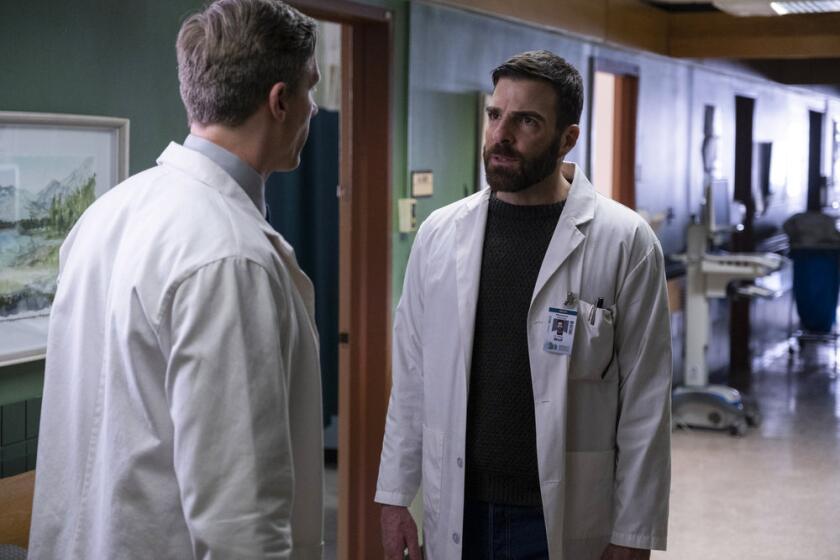‘Flashpoint’ recalls reporter’s bomb ordeal
At the end of “Flashpoint,” a painfully intimate and emotionally wrenching look at the Baghdad bombing that severely injured CBS News reporter Kimberly Dozier and killed two of her colleagues, anchor Katie Couric provides the overline: “One group of soldiers, one IED (improvised explosive device), one day in Iraq.” The story centers on Dozier, her grievous injuries, her 25-plus surgeries, her stitches (her doctor “lost count” at 2,000), and her grief over the death of sound technician James Brolan, cameraman Paul Douglas and Army Capt. James Alex Funkhouser.
CNN just happened to be filming at the military trauma hospital in Baghdad when Dozier and several soldiers injured in the blast were rushed into surgery. The blood, the pain and the agonized moaning are real.
What makes “Flashpoint” powerful, however, is not that it deals with the wounding of a reporter and the death of two colleagues and an Army officer. Nor is it the imagery, as vivid and riveting as it is.
What makes “Flashpoint” must viewing for anyone who wants to understand the war in Iraq is knowing that IEDs are the most common killer of U.S. troops and, as Couric suggests, what happened to Dozier, Brolan, Douglas, Funkhouser and the others on May 29, 2006, is happening nearly every day to soldiers there.
The CBS crew was accompanying a foot patrol of the 4th Infantry Division for a story on the troops on Memorial Day. An IED hidden in a parked car exploded as the group walked by. It was remote-controlled from a distance.
“Someone was watching,” Dozier tells Couric. “Someone was watching for us.” A soldier with the Iowa National Guard saved Dozier’s life by applying emergency aid. At the 10th Combat Surgical Hospital in Baghdad, Dozier had lost so much blood that her pulse was gone. Transfusions brought her to life.
From Iraq to the military hospital in Landstuhl, Germany, to the National Naval Medical Center in Bethesda, Md., “Flashpoint” follows Dozier. Her case serves as a text on the horrific nature of blast injuries and the flying shrapnel that breaks bones, slices skin and embeds shards deep into the skull.
The film visits with the soldiers who were part of the patrol and with Funkhouser’s widow, Jennifer, and their two young daughters. “We’re still a family, but he’s not here,” she says.
Staff Sgt. Nathan Reed lost his lower right leg but is determined to stay on active duty. Cpl. Michael Potter’s hands were burned and he had to learn to use them again. He’s preparing, without complaint, to return to Iraq.
Sgt. Justin Farrar had his jaw shattered. He suffers from such severe post-traumatic stress disorder that he can’t bear to wear his uniform. In possibly the most poignant part of “Flashpoint,” Farrar goes to Funkhouser’s grave to apologize for not being able to save him.
Through it all, Dozier displays bravery, loyalty to her colleagues, and a sense of humility when surrounded by soldiers whose wounds are even more traumatic than hers. She admits to moments of despair at Bethesda when she realized she would have to learn to walk again.
“Then I would look down the hall and see guys who had lost limbs, who had horrible brain injuries,” she says. “I’d think: ‘I can deal with this. They have a lot more to get through.’ ”
*
‘Flashpoint’
Where: CBS
When: 10 to 11 tonight
Rating: Not rated
The complete guide to home viewing
Get Screen Gab for everything about the TV shows and streaming movies everyone’s talking about.
You may occasionally receive promotional content from the Los Angeles Times.



